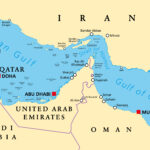As I started to put together this article, I did as so many other people do and did my research on the internet. During my research I found numerous articles that we have all read or seen on the typical liquor liability claim. A man, who was over served, gets into an accident. He critically injures himself or someone else and they sue the bar that served him alcohol.
One such example I found extremely important involved the $135 million jury verdict against Aramark (one of the country’s largest alcohol and food concessionaires, providing service to over 230 sports arenas and concert halls) for their role in the 1999 tragedy at Giants Stadium. A fan, Lanzaro, whose drunken-driving left a young girl paralyzed, testified that he drank the equivalent of 16, 12-ounce beers, on Oct. 24, 1999, most of them at the stadium. His speech was slurred when he tipped a vendor at half-time to buy six beers. Hours later, Lanzaro crashed into the car of a family as they returned home from a pumpkin-picking trip, leaving Fazila Verni injured and her 2-year-old daughter, Antonia, a quadriplegic.
The appeals court recently overturned the verdict against Aramark, claiming the evidence presented by the plaintiffs regarding the “environment” at the stadium (including faulty alcohol policies, poor employee training and repeated violations of the two-beer sales limit) might have “inflamed” the jury. The trial judge allowed a mountain of references to the drinking environment at the stadium that some say was not relevant to the issue of serving a visibly intoxicated person.
The case has state and national implications for the alcohol service industry. At the time of the verdict, experts said it was the largest alcohol liability award in the country. It also was the first reported alcohol liability case in New Jersey, in which punitive damages were awarded to the tune of $75 million. But recently the state appeals panel ordered a new trial, claiming the lower court improperly allowed testimony about the “culture” of intoxication at the stadium.
Stay tuned. This could have as big of an effect on liquor liability coverage as The Station fire in Rhode Island had on pyrotechnics and event insurance.
Underwriting in the 21st century
This leads into the interesting topic of how underwriting has changed in the 21st century. In our underwriting, we have recently been focusing on the culture and environment of not only sporting events, concerts and festivals, but also nightclubs, bars and restaurants. Since we cannot physically visit all the locations of these prospective clients, we use the next best method: “Google.”
We have all heard of “Googling” an old girlfriend or boyfriend, family members, or our favorite entertainers, but recently “Googling” has turned into a very important underwriting tool.
Entertainment and hospitality businesses are now using the internet as their number one marketing tool. The goal is to attract more attendees and sponsors to their events and get more people into their clubs and restaurants. Often, these businesses forget that the internet is public domain, for all to see, including underwriters.
‘Declining’ risks
A Web site boasts that a potential insured event is the state’s largest blues festival with 20,000 partiers enjoying music, beer, food and fun. The insured’s application claims they will have an attendance of only 5,000. Other Web sites found while conducting an internet search show concert-goers crowd surfing, pyrotechnics and fireworks displays, band members “stage diving” into the crowd, organizers spraying the crowd with water cannons and girls with their tops pulled up.
This type of situation is not limited to events. Bars and nightclubs are now routinely declined because of their content on the internet.
During the underwriting process of various prospects, a search on the internet can turn up Web sites showing pictures of scantly-dressed young women dancing on the bar; foam party night where the dance floor is turned into a giant foam bathtub; a tequila shot lady pouring drinks directly into patrons mouths; a bartender pouring flaming shots; drink specials including, buy a drink get a shot for free; and drastically reduced drink prices during certain hours. All are an underwriter’s worst nightmare.
It is understandable that underwriters are now routinely “Googling” news articles on the events, bars and even the owners or promoters themselves, to learn if there has been a history of problems.
Examples of a few actual headlines we have found during underwriting include:
• “Shooting victim files suit against Tampa bar” — The application for this risk indicated no claims.
• “Event organizer to serve three years for fraud” — Needless to say another declined application.
So remember, if you want to take on the task of writing entertainment events and hospitality establishments you can save a lot of time and effort by using the “Google Factor.”
James Chippendale is president of Dallas, Texas-based CSI Entertainment Insurance. He has placed coverage for more than 500 nightclubs, bars, restaurants and more than 3,000 special events, concerts and festivals including some of the countries largest and most successful events and venues. He has also been seen in dozens of entertainment industry publications, including Billboard Magazine, Pollstar and Rolling Stone.
Topics Underwriting Google
Was this article valuable?
Here are more articles you may enjoy.


 Progressive Set to ‘Maximize’ Growth, Building on Q1
Progressive Set to ‘Maximize’ Growth, Building on Q1  Three Insurers Reject Chevron’s $57 Million Claim for Iran Oil Seizure
Three Insurers Reject Chevron’s $57 Million Claim for Iran Oil Seizure  Viewpoint: The 10 Major Risks Shaping Insurance Today
Viewpoint: The 10 Major Risks Shaping Insurance Today  White House to Push Cybersecurity Standards on Hospitals
White House to Push Cybersecurity Standards on Hospitals 


